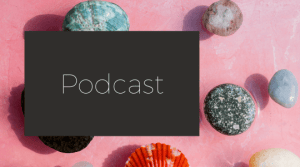
Easy tools to run an online business: Acuity
If you are new in online business, it can be helpful to know which steps in which order.
As long as you have an ABN you are ready to roll and start making money in your business.
In my other blog “Do You Need a Website” I mentioned having made 10k in my business before I even had a website. I said that if you just have a booking tool like Acuity and a social media account you can definitely make money and start your business online without a website. That’s how I did it.
So today I’d like to go into a bit more detail about Acuity and help you get started making money in your business.
Acuity has lots of competitors that do a very similar service like Calendly. I am not against Calendly, or any other tool. All you really need is a place where people can book and pay. So it doesn’t have to be Acuity. The basic principles of this article are the same no matter which service you decide to use.
Acuity is an online scheduling tool. It allows you to create different types of appointments.
You can then share the link to those different types of appointments with clients and they can book themselves into your calendar.
You can also have one page where people can see all your different kinds of appointments if you like to let them choose from different lengths or style of meeting.
The main things I love about Acuity are:
- It saves you loads of time
- Let’s you have a page where people can go without a website
- You can collect payment
- You can synchronise it with your Google calendar
- You can send email reminders and follow ups
Some of these are free features and some are paid so let’s run through in a bit more detail.
It can save you loads of time
Setting up appointments can take 2-10 back and forth emails or messages. I have heard that some people enjoy this back and forth but for me, sometimes it can seem like a waste of time. It is so easy to send a past or potential customer a link to book in with your availability all marked out and ready to go.
If you are getting started with Acuity, you might like to watch this video set up tutorial I did on YouTube
Basically, I would encourage you to follow along with the setup wizard for the first couple of steps. Once you’ve read the rest of this article, you will know whether you need the free or paid version but you should get a free trial so just go with that before you pay anything.
It creates a page where people can go and book in without you having to set up a whole website
When you’ve created your availability and a couple of appointment types, click on “Scheduling Page Link” and click the link there. You should see a page with all of your appointment types listed.
You can check out my scheduling page for Bush Flower Essence sessions as an example here: https://australianplantsforhealing.as.me/schedule.php
If you like, you can edit what words appear on this page to give an overall description of your services, as well as the description for each appointment type.
You can give people a good idea of what they will receive, what you are about AND let them book in for a session. All without a website and even for free if you don’t want the following 3 features.
You can collect payment
This is only available on the paid plan. You can take payment when people book in!
This is not essential. You can get around it by using an invoice instead of Acuity for payment, or use PayPal buttons.
If you do want to take payments through Acuity, you will need a Stripe or Paypal account.
Yes: they both charge fees but you are going to need to pay if you are in business. There is no way to collect money on the internet without fees. Direct bank transfer is the way around this which is fine for Australian customers.
Of course there are more options than this but I am thinking about keeping it simple for Australian biz babes. Plus, I’m just sharing tools with you that I am familiar with so I could help you if you needed help.
You can synchronise it with your Google or Apple calendar
If you have other appointments or commitments you might like to synchronise Acuity with your calendar. This is another paid feature but it does save a lot of rescheduling and apologising when you double book.
You can get around it on the free plan by blocking in your regular commitments when you set up your availability, but if you have commitments that don’t happen at the same time every week, you might like this feature.
You can send email reminders and follow ups
On the free plan you get an immediate email confirmation sent out. This is customisable and is a great way to share the link to a Zoom meeting and other appointment instructions.
However, on the paid plan, you can also create hour-before reminders and post-meeting emails.
If you have loads of time because you’re not fully booked, you can send out emails manually. Or if you are just busy or forgetful like me, you can pay and use this feature.
I hope this article saves you thousands of dollars on a website and a whole lot of headache from creating a website too early. You can spend at least a year in business without a website and have a beautiful online business using a few simple tools.
If you found this helpful and you like, you can make a small donation.
“I pay my respects and acknowledge the people of the Yuin Nation, traditional custodians of the land on which I live and work. I also pay respect to all Elders — past, present and future.”












